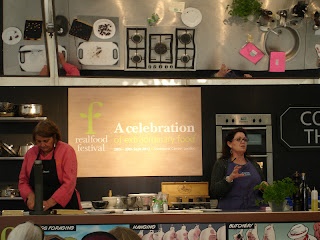Sundays are unique. Part of the weekend, they are a time to enjoy life, unencumbered by the world of work and obligation. They are also a day to get over the excesses of Friday and Saturday night, of quiet rest and recouperation. However, because they hail the end of the weekend, they are full of a gentle melancholy. I'm sure you remember your school days. Back then, Sunday morning seemed to last for days, but then you found yourself in Sunday afternoon and evening, with the realisation that homework had to be done for the next day.....
There is nothing so British as a good old Roast Dinner; beef, pork, lamb or chicken. Lovingly tended by a watchful cook, it is a marvel of organisation and planning. The stages need to be organised with military precision to prevent burnt tatties, overcooked veg or worst of all, uncooked and potentially dangerous meat.
I am incompetent at Sunday Roasting. It is a noble art which is beyond my skill level. It involves knowing when your meat will be cooked, then working backwards to ascertain what time the potatoes have to go in the oven and the veggies go in the steamer..... I leave Sunday Roasts to Him Indoors. It suits his organised, logical and methodical nature.
I am incompetent at Sunday Roasting. It is a noble art which is beyond my skill level. It involves knowing when your meat will be cooked, then working backwards to ascertain what time the potatoes have to go in the oven and the veggies go in the steamer..... I leave Sunday Roasts to Him Indoors. It suits his organised, logical and methodical nature.
Other than food, my other obsession is music. Having recently been in twitter contact with Jack Knight of "The Knight of The Round Table" blog about his preferred cooking soundtrack, I decided to share a Sunday cooking soundtrack with you. You'll find Jack's post here
This is an unashamedly 'chilled out' selection, full of acoustic guitars, gentleness and mellow vibes. Not completely horizontal, there should be some solid melody and style here, too. Just what you need for rustling up a hearty roast dinner. There is a time and place for fast paced tracks, edgy tunes and heavy sounds. The run up to Sunday lunch is not, in my opinion, that time.
I hope you enjoy this selection. Please leave comments below, because I'd love to know what you think! Scroll down to the bottom to play.......
Except for the homemade effort cooked by Him Indoors chez nous, the roast dinners pictured were prepared by those good folks at the Catford Bridge Tavern. http://www.catfordbridgetavern.com/
Note for music geeks: I had wanted to post the Lilac Time song 'Grey Skies And Work Things' from their album 'Astronauts' (a lost classic album if ever I heard one!). The lyric sums up, for me, what a Sunday is all about:
"A tune played on church bells ring
A song that the angels could sing
I know what tomorrow will bring
Grey skies and work things"
A song that the angels could sing
I know what tomorrow will bring
Grey skies and work things"
Sadly, so underrated are they as a band, I could not find the track on Youtube. Fame is a fickle thing indeed.
 | |
| The homegrown Sunday Lunch |
The tracks in the playlist are:
Jimi Hendrix - Little Wing
Michael Kiwanuka - Tell Me A Tale
Tim Buckley - Hallucinations
The Flaming Lips - Do You Realize?
James Blake - Limit To Your Love
Catherine Howe - Up North
Joni Mitchell - California
Leonard Cohen - Stranger Song
Beth Orton - She Cries Your Name
Alt J - Something Good
Richard Hawley - Seek It
The Lilac Time - The Lost Girl In The Midnight Sun
Nick Drake - River Man
Ben Howard - Old Pine
Bat For Lashes - Laura
Kate Bush - Army Dreamers
Paul Weller - Wild Wood
The The - Love Is Stronger Than Death
The Smiths - Back To The Old House
Tori Amos - Silent All These Years
Turin Brakes - Feeling Oblivion







































